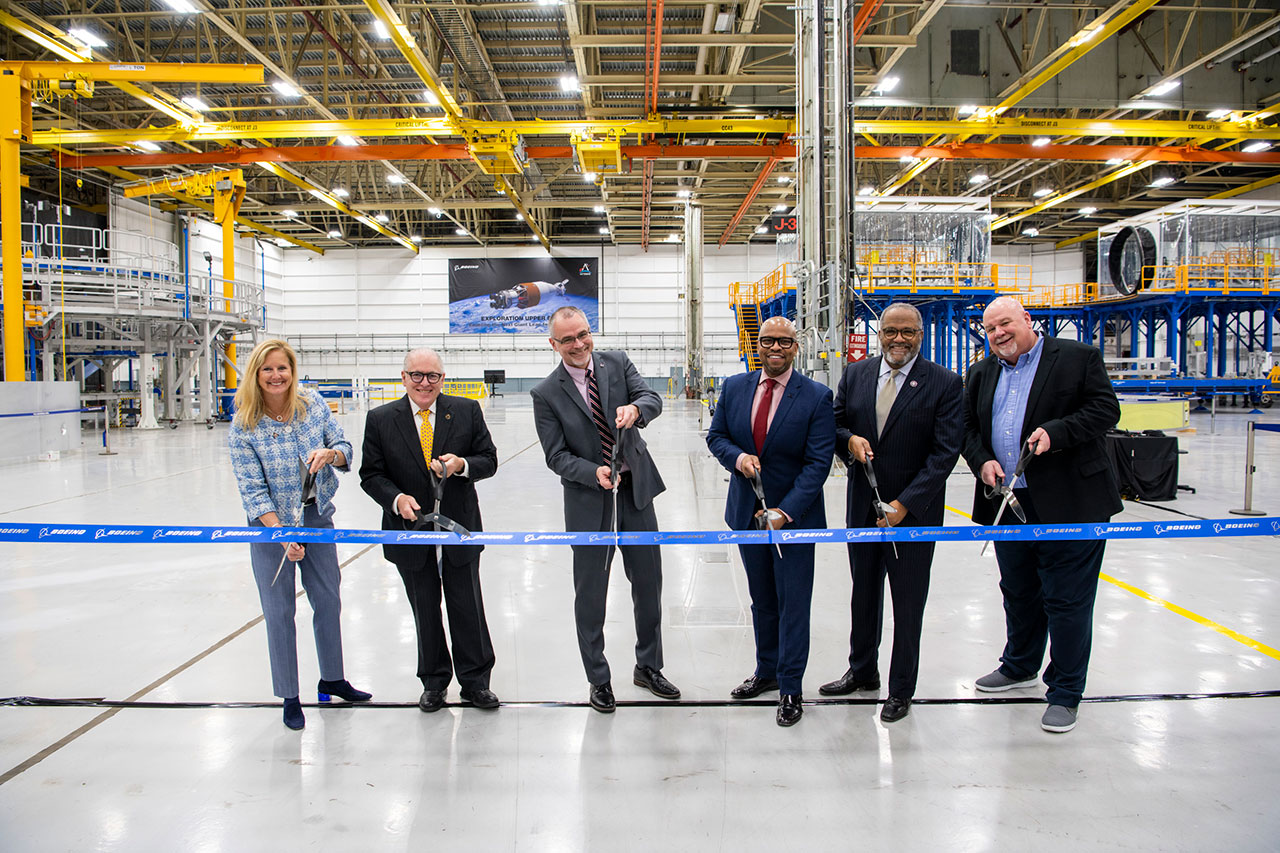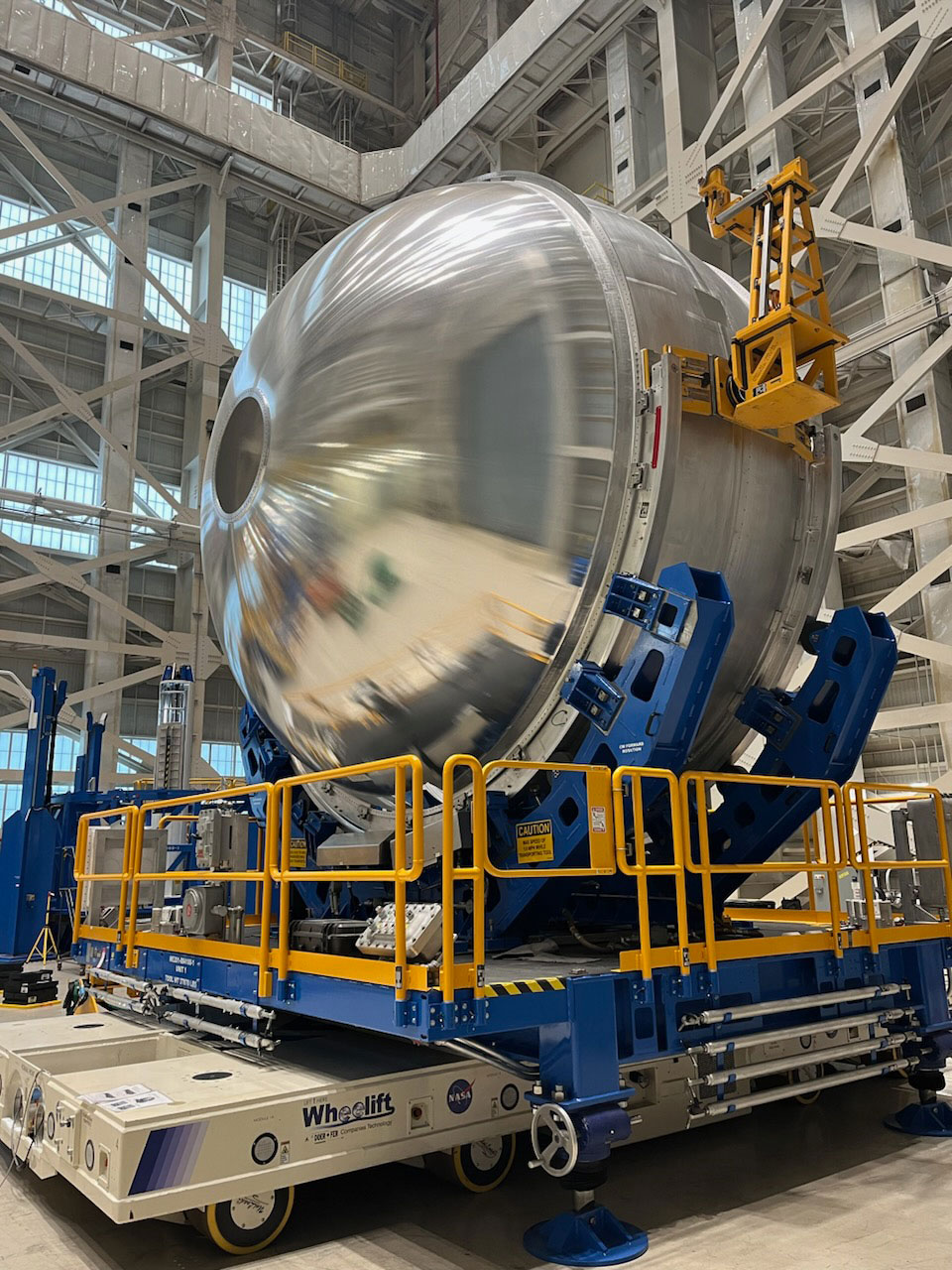One year ago this month, NASA and Boeing unveiled the Exploration Upper Stage (EUS) Gray Box production area at NASA’s Michoud Assembly Facility (MAF) in New Orleans, marking a significant milestone in the program’s shift from design to production. Since then, teams at MAF have made significant headway in manufacturing both test articles and flight hardware for EUS in parallel.

“The safety, integrity and quality of the hardware we produce is our top priority, and the parallel efforts to manufacture test articles and flight hardware helps ensure EUS performs in the demanding conditions of deep space, and allows us to maintain program schedule at the same time” comments James Savage, Boeing’s EUS Chief Engineer.
Test article development: Teams have been dedicated to building the Weld Confidence Article (WCA) and the Structural Test Article (STA) for EUS. The STA is a full-scale model of the flight vehicle that confirms the overall build and structural integrity of the flight vehicle. Taking a building block approach, the WCA is built first and is the test component that verifies the integrity of the weld designs and processes.
- In November 2023, EUS teams completed structural assembly of the thrust structure for the STA. This structure transfers the energy from the four RL10 engines to the upper stage, effectively propelling the payload – whether it's a crew capsule, cargo, or both – on the correct trajectory to its destination.
- That same month, the teams also finished the Liquid Oxygen (LOX) tank for the WCA. The LOX tank for the EUS has a diameter of about 5.5 meters, smaller than the one on the Core Stage but larger than the one on the Interim Cryogenic Propulsion Stage. The LOX tank for the EUS is designed as an oblate spheroid, which improves its structural capability and reduces the mass of the EUS.

Flight hardware advancements: Over the past year, components of the first EUS, known as EUS 1, were also completed. Notable achievements include the build of the Mid-Body L Ring, which is the welded structure of the mid-body that holds the hydrogen and oxygen tanks together, and the LH2 Barrel Panel Welds, which when integrated with the LH2 domes forms the primary structure of the LH2 tank.
Celebrating the past, advancing the future: These production advancements underscore the EUS team’s commitment to maintaining the highest standards of quality and safety. Each milestone brings humanity one step closer to deep space exploration.
“The opening of the innovative EUS Gray Box production area ushered in a new chapter for human space exploration. This milestone – and our continued production success since – represents our unwavering commitment to pushing the boundaries of human potential and propelling humanity towards new frontiers," reflects Jerald Webber, Boeing’s director for the SLS Block 1B program.
###
NASA’s Space Launch System (SLS) rocket – the nation’s next-generation, super heavy-lift rocket – will enable NASA’s Artemis program and will carry people and cargo to the moon, Mars and beyond. Boeing was selected by NASA to design, develop, test and produce the core stages, upper stages, and avionics suite for the SLS fleet of rockets. The first SLS rocket – featuring the Boeing-built Core Stage – successfully launched at 1:47 AM ET on November 16, 2022, as part of the Artemis I Mission. Production is currently underway for the Boeing-built core stages, upper stages, including Exploration Upper Stage – which enables a 40% increase in payload capacity for the Space Launch System (SLS) rocket's Block 1B configuration, propelling deep space exploration to new heights – and avionics for future Artemis missions. Learn more about the SLS.